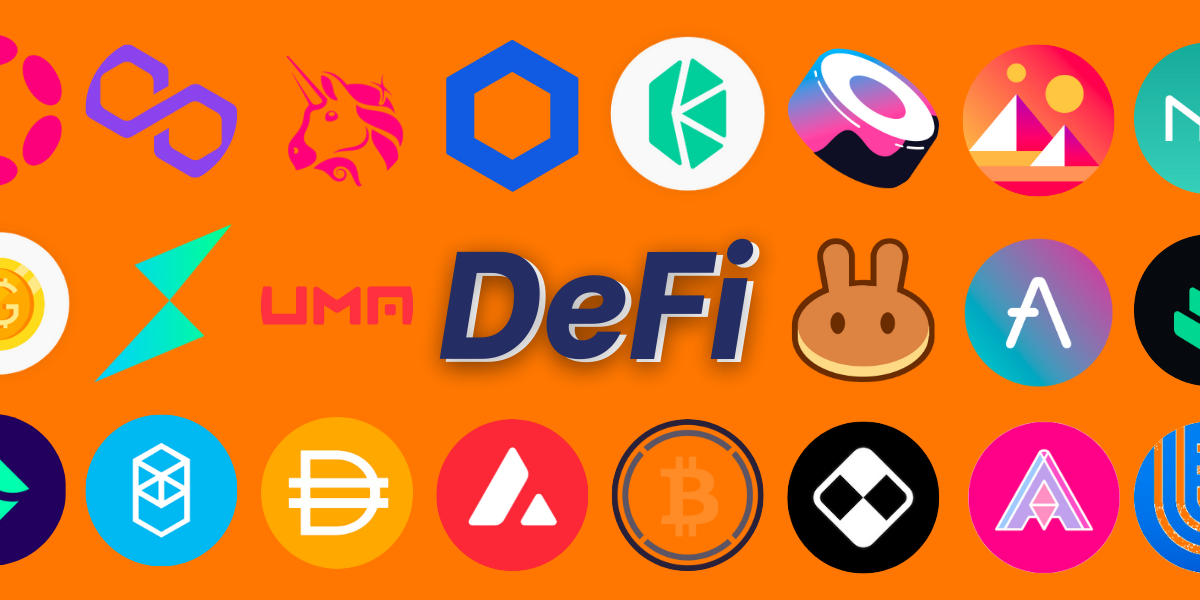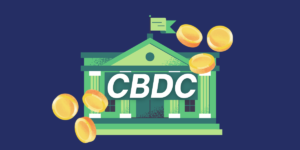Decentralised finance, known more commonly as DeFi, is an umbrella term used to describe an ecosystem of conventional finance tools that have been built on a public blockchain.
As of late, more platforms and products are beginning to offer DeFi with the aim to remove financial intermediaries such as banks, exchanges and brokerages. Much like blockchain technology, DeFi isn’t controlled by a central source.
Depending on the project, each one aims to offer borrowing and lending services, leverage trading, insurance and token swaps.
What are the benefits?
- Potential for new financial markets, products and services to be created using public blockchains.
- Doesn’t require intermediaries to run.
- No matter someone’s access to financial services, anyone can access DeFi applications.
- Public blockchains for global implementation, as there are no permissions for users to join and interact.
- Contains an element of transparency.
Popular types of DeFi applications
Decentralised exchanges
Decentralised exchanges (DEXs) are marketplaces that allow crypto traders to make transactions, without the need for an intermediary, through self-executing agreements written in code, called smart contracts.
Unlike centralised exchanges, which are managed by a centralised organisation such as a bank.
Stablecoins
Stablecoins have their price pegged to an external reference, such as another currency, commodity or financial instrument. Think USD or the price of gold.
Stablecoins offer a great solution to the highly volatile nature of cryptocurrency, by providing price-stable assets. This form of altcoin still maintains the mobility and utility of a crypto asset.
Lending platforms
Crypto lending platforms allow borrowers to utilise crypto assets as collateral for a fiat or stablecoin loan.
Crypto loans appeal to some due to several advantages:
- Low-interest rates
- Personal choice of loan currency
- A credit check is not required
- Funds are transferred quickly
- Ability to earn passive income on crypto assets
Wrapped Bitcoin (WBTC)
Wrapped Bitcoin (WBTC) is an Ethereum ERC-20 token, that is equal in price to Bitcoin. WBTC allows a user to bring the value and liquidity of Bitcoin to the dynamic world of DeFi.
The key advantages of WBTC are that the transfer is faster than that of normal Bitcoin and they can be integrated with Ethereum wallets, decentralised apps (dApps) and smart contracts.
As of May 2022, there are over 273,000 WBTC in circulation.
Prediction markets
Prediction markets allow for betting on the outcome of future events. In the crypto sector, it allows for this to happen without intermediaries.
Notable DeFi Assets
- Unsiwap (UNI): a decentralised exchange.
- MakerDAO (DAI): lending and borrowing service.
- Aave (AAVE): lending and borrowing service.
- Compound (COMP): lending and borrowing service.
- SushiSwap (SUSHI): a decentralised exchange.
- Bancor (BNT): On-chain liquidity.
- Curve DAO Token (CRV): lending and borrowing service.
- Yearn Finance (YFI): lending and borrowing service.
- Synthetix (SNX): decentralised derivatives.

DeFi Projects
The inception of DeFi can be first traced to Maker, a protocol that allows for the creation of a decentralised stablecoin – DAI. DAI first supported Ethereum as collateral and allowed for single-sided loans before expanding into multi-collateral products.
Maker continues to be one of the largest DeFi projects and is an important pillar to lending/ borrowing activities on various blockchains.
Uniswap, a protocol started in 2019, decentralised trading and is one of the most important protocols in the DeFi space. Uniswap allows users to exchange tokens for another.
Projects that were looking to raise funds through a coin offering looked to Uniswap, in addition to and instead of, centralised venues – as there was no formal listing process. This protocol opened up the floodgates to new retail money during the peak of DeFi Summer.
DeFi Summer 2020

The (Northern hemisphere) summer of 2020 brought about the DeFi boom, arguably introduced by the liquidity mining program from Compound. As DeFi users on Compound reaped rewards from lending and borrowing, the yields for different tokens increased dramatically.
The spread in the supply and borrow yields brought about a new type of cryptocurrency participant, the yield farmer. Yield farmers take advantage of varying supply and lending spreads to achieve the best yields.
DeFi’s ascent plateaued in September 2020, and major DeFi coins started losing their value, liquidity dried up and supply and lending APYs collapsed. The DeFi winter (as it was known) bottomed out in November 2020 with a lot of DeFi protocols losing 70-90% of their value.
DeFi in 2021 and Beyond
In 2021, DeFi began clawing its way back, becoming one of the highest growing sectors in the crypto space. The total value locked (TVL) across all DeFi platforms was around $630 million in 2020 and grew to about $241 billion by the end of 2021.





